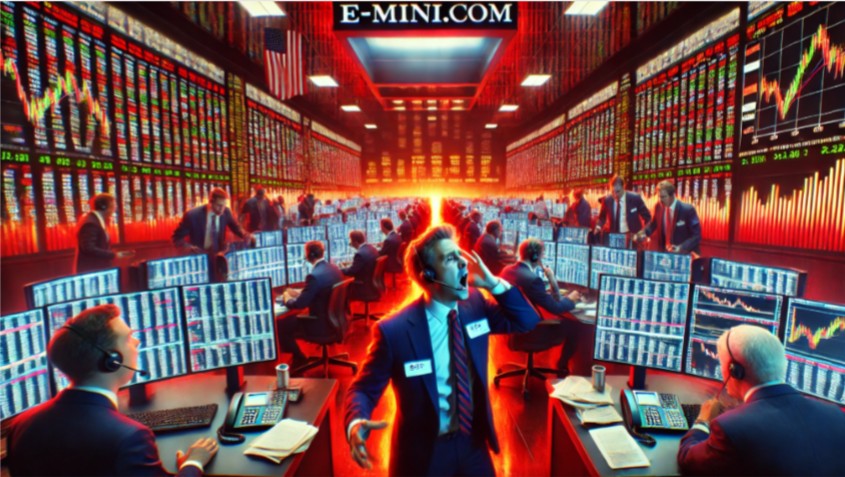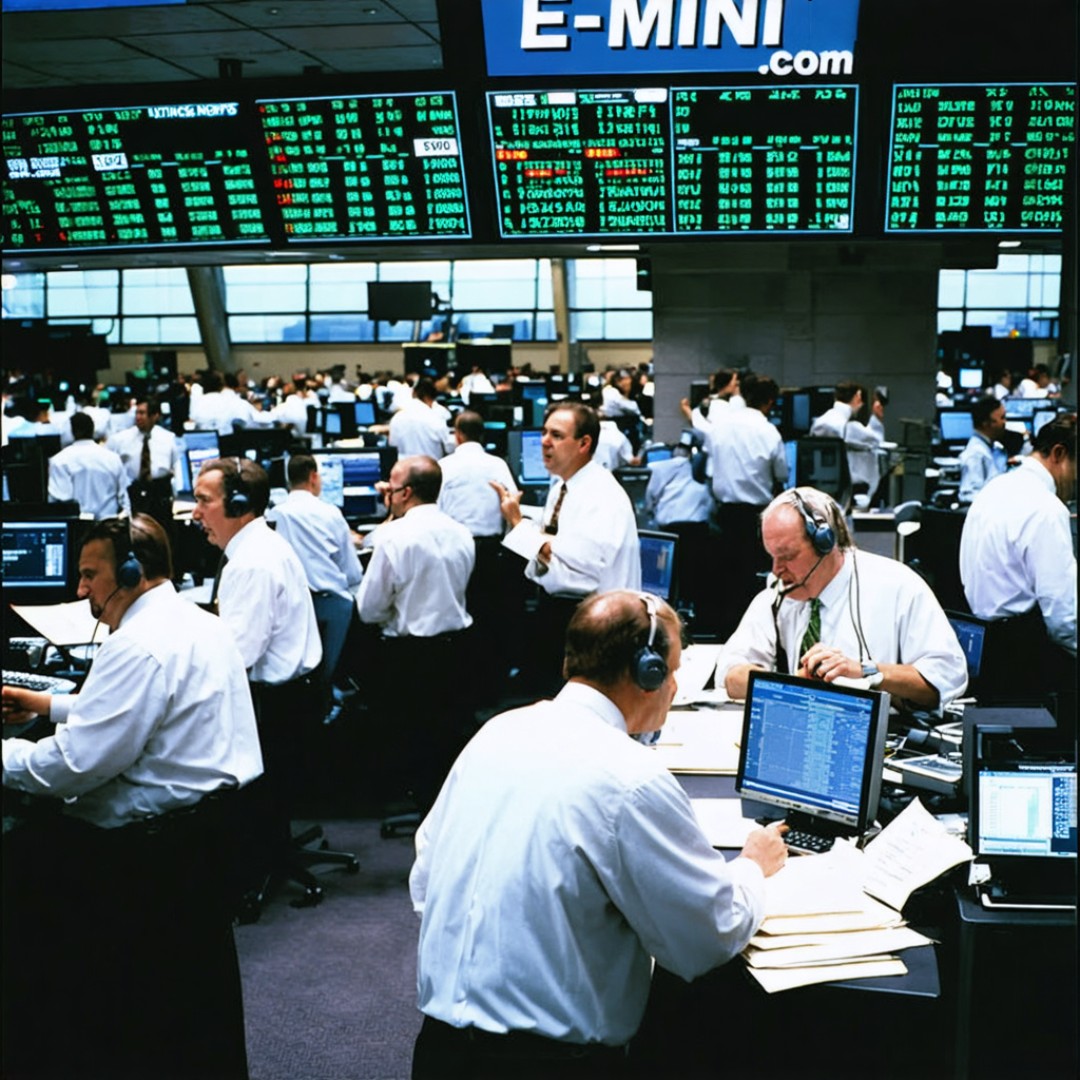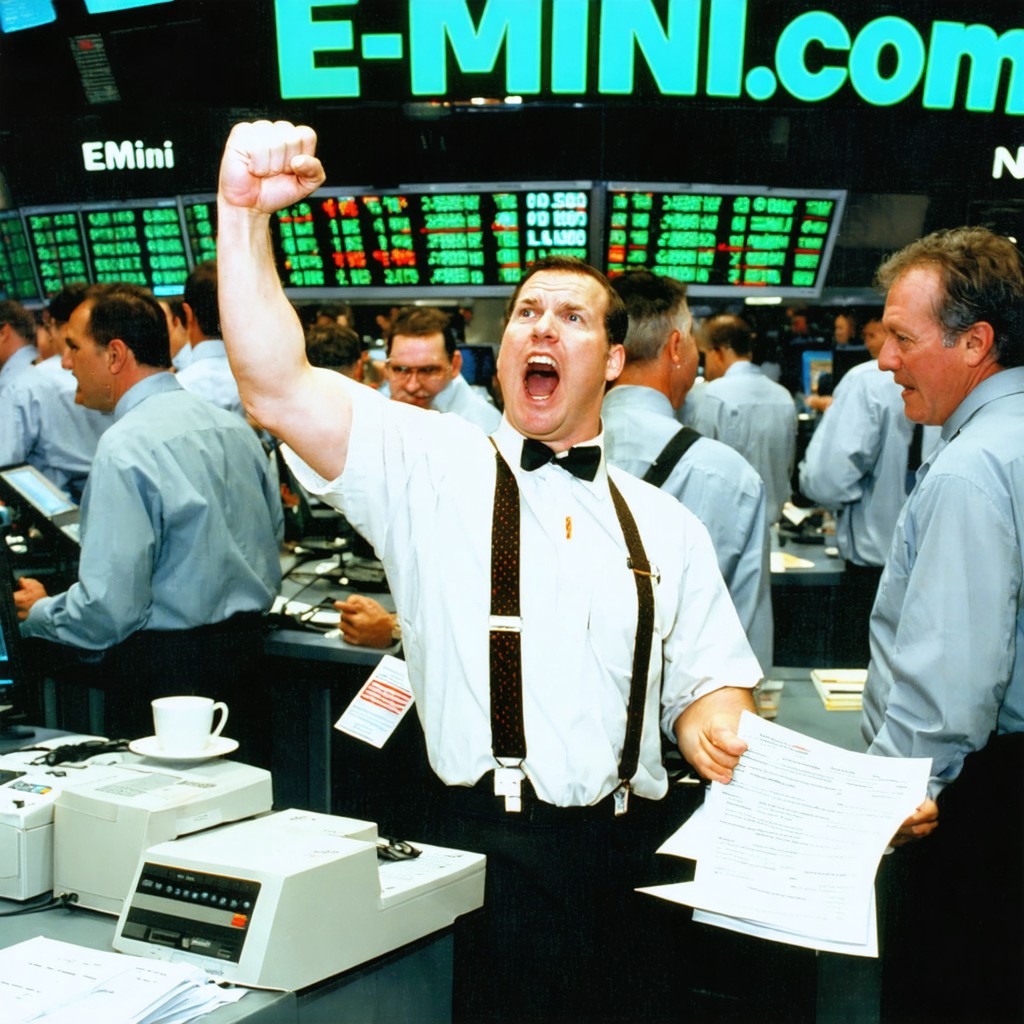Learn more about trading E-mini futures with E-mini.com here.
While financial indicators and economic news often take center stage in the world of trading, the influence of non-financial industries should not be overlooked. Non-financial industries, including sectors such as technology, energy, healthcare, and consumer goods, have a significant impact on the E-Mini Futures market. This article explores the effects of non-financial industries on the E-Mini Futures market and trading with E-mini.com, emphasizing the importance of understanding industry dynamics and selecting the best Micro E-Mini Futures brokers and trading platforms.
- Sector Rotation and Market Sentiment: Non-financial industries play a crucial role in shaping market sentiment and driving sector rotation. Changes in the performance of specific sectors can significantly impact E-Mini Futures trading. Here are some key effects:
a) Technology Sector: The technology sector, which includes companies involved in software development, hardware manufacturing, and telecommunications, has a substantial influence on E-Mini Futures trading. Technological advancements, product launches, and innovations within the sector can create significant market movements, attracting investors and impacting the overall sentiment.
b) Energy Sector: The energy sector, encompassing oil, gas, and renewable energy companies, has a profound effect on E-Mini Futures trading. Fluctuations in energy prices, geopolitical tensions, and developments in renewable energy technologies can drive market volatility and affect trading strategies.
c) Healthcare Sector: The healthcare sector, including pharmaceuticals, biotechnology, and medical device companies, is subject to regulatory changes, clinical trial results, and breakthroughs in medical research. News related to drug approvals, healthcare policy, and medical advancements can have a direct impact on the healthcare sector and subsequently influence E-Mini Futures trading.
- Interplay Between Non-Financial Industries and Economic Indicators: Non-financial industries and economic indicators are closely interconnected, with developments in one sector often influencing broader economic trends. The following factors illustrate the interplay between non-financial industries and economic indicators:
a) Employment Data: Employment figures, such as non-farm payroll data, jobless claims, and wage growth, can directly impact specific non-financial industries. For example, positive employment data may boost consumer spending, benefiting sectors such as retail, consumer goods, and hospitality, which can, in turn, influence E-Mini Futures trading.
b) Manufacturing and Industrial Production: Changes in manufacturing and industrial production levels affect multiple non-financial industries, including manufacturing, machinery, and materials sectors. Economic indicators such as the Purchasing Managers’ Index (PMI) provide insights into manufacturing activity and can impact related sectors, subsequently influencing E-Mini Futures trading.
c) Consumer Confidence and Spending: Non-financial industries reliant on consumer spending, such as retail, consumer goods, and leisure, are sensitive to consumer confidence and spending levels. Economic indicators that reflect consumer sentiment and spending patterns, such as consumer confidence indices and retail sales reports, can influence these sectors and indirectly impact E-Mini Futures trading.
- Importance of Choosing the Best Micro E-Mini Futures Brokers: Selecting the best Micro E-Mini Futures brokers is crucial for traders looking to navigate the effects of non-financial industries on the E-Mini Futures market. Consider the following factors when choosing a broker:
a) Sector Expertise: Opt for brokers with expertise in the non-financial industries that have a significant impact on E-Mini Futures trading. Experienced brokers can provide valuable insights and guidance related to sector-specific trends, news, and trading strategies.
b) Trading Platform and Tools: The best Micro E-Mini Futures brokers offer advanced trading platforms with real-time data, charting tools, and order execution capabilities. These features enable traders to analyze sector-specific trends, monitor relevant E-Mini Futures contracts, and execute trades efficiently.
c) Research and Analysis Resources: Brokers that provide comprehensive research and analysis resources can greatly assist traders in understanding the effects of non-financial industries on the E-Mini Futures market. Access to industry reports, sector-specific news, and economic analysis can enhance decision-making and trading strategies.
The housing market serves as a crucial component of the overall economy, and fluctuations in this market can have a ripple effect on various sectors, including financial markets. The effects of changes in the housing market on the E-Mini Futures market and trading with E-mini.com brokers it highlights the interconnectedness between the housing market and E-Mini Futures, and the significance of selecting the best Micro E-Mini Futures brokers and trading platforms for successful trading strategies.
- Relationship between Housing Market Changes and E-Mini Futures Trading: The housing market influences the economy in multiple ways, impacting consumer confidence, employment, construction, and overall economic growth. Here’s how changes in the housing market can affect E-Mini Futures trading:
a) Consumer Confidence and Market Sentiment: The housing market is closely tied to consumer sentiment and confidence. Positive trends, such as rising home prices and strong housing demand, can boost consumer confidence and contribute to a positive market sentiment. This optimism can spill over into the E-Mini Futures market, leading to increased trading activity and potentially driving prices higher.
b) Economic Indicators: The housing market is reflected in various economic indicators that traders monitor. These indicators include new home sales, housing starts, building permits, and home price indices. Changes in these indicators provide insights into the health of the housing market, which can impact market sentiment and influence trading decisions in the E-Mini Futures market.
- Inflation Expectations: Traders closely analyze the CPI report to assess the level of inflation in the economy. Higher-than-expected CPI figures may indicate rising inflationary pressures, leading to concerns about purchasing power and potential interest rate hikes. This can result in increased market volatility and impact E-Mini Futures prices.
- Central Bank Policy: Central banks, such as the Federal Reserve, consider inflation when making monetary policy decisions. If the CPI report shows signs of inflation exceeding the central bank’s target, it may prompt the central bank to adopt a more hawkish stance, potentially leading to changes in interest rates or monetary policy. Such actions can have a significant impact on E-Mini Futures trading.
- The Role of Central Banks in E-Mini Futures Trading: Central banks, such as the Federal Reserve (Fed) in the United States, have the responsibility of managing monetary policy to maintain price stability, foster economic growth, and promote employment. The actions taken by central banks can significantly influence US E-Mini Futures trading in the following ways:
a) Interest Rate Decisions: One of the most impactful tools used by central banks is the adjustment of interest rates. Changes in interest rates can have a direct effect on E-Mini Futures trading. For instance, if a central bank raises interest rates, it can attract capital from the equity market to fixed-income investments, potentially leading to a decline in E-Mini Futures prices.
b) Quantitative Easing (QE) Programs: Central banks may implement QE programs to stimulate the economy during periods of economic weakness. QE involves the purchase of government bonds and other securities by the central bank. This injection of liquidity into the financial system can drive down interest rates, encourage borrowing and investment, and have a positive impact on E-Mini Futures trading.
c) Forward Guidance: Central banks provide forward guidance by communicating their intended monetary policy actions to market participants. Statements from central bank officials about future interest rate moves, economic outlook, and policy direction can significantly influence trader sentiment and E-Mini Futures prices.
- Understanding the Impact of Central Bank Actions: To effectively navigate the impact of central bank actions on US E-Mini Futures trading, traders should consider the following factors:
a) Market Sentiment and Investor Confidence: Central bank actions often generate market sentiment and influence investor confidence. Positive actions, such as interest rate cuts or accommodative monetary policy, can boost market sentiment and increase demand for E-Mini Futures. Conversely, negative actions or unexpected changes in policy direction can lead to market volatility and impact E-Mini Futures prices.
b) Interconnected Global Markets: Central bank actions in one country can have ripple effects across global financial markets, including US E-Mini Futures. Traders should be aware of the interconnections between economies and central banks worldwide to anticipate potential impacts on E-Mini Futures trading.
c) Interconnected Sectors: The housing market has strong connections to sectors such as construction, real estate, financial services, and consumer goods. Changes in the housing market can have a domino effect on these sectors, causing fluctuations in stock prices, sector-specific E-Mini Futures contracts, and overall market volatility. Traders need to be aware of these interconnections and adjust their trading strategies accordingly.
- Inflation Expectations and Monetary Policy: CPI and PPI reports provide valuable insights into inflation trends. High CPI readings suggest increasing consumer prices, which can lead to expectations of tightening monetary policy by central banks. This can influence interest rates, liquidity in the market, and overall investor sentiment, impacting E-Mini Futures trading. Traders monitor these reports to gauge potential shifts in monetary policy, which can have a ripple effect across various sectors.
- Consumer Spending and Retail: CPI reports play a crucial role in understanding consumer purchasing power. Rising consumer prices may lead to reduced disposable income and lower consumer spending, affecting retail sectors. Traders involved in E-Mini Futures trading closely monitor CPI reports to anticipate potential shifts in consumer behavior, which can impact the performance of retail companies and related E-Mini Futures contracts.
- Commodities and Manufacturing: PPI reports provide insights into the cost of production for goods and services. Changes in the PPI can impact the profitability of manufacturing companies and influence the prices of commodities. For example, if the PPI shows increasing production costs, it may result in higher commodity prices. Traders in E-Mini Futures, particularly those involved in commodities and manufacturing sectors, closely analyze PPI reports to assess potential impacts on supply chains and pricing dynamics.
- Interest Rates and Financial Services: Inflationary pressures indicated by CPI and PPI reports can influence interest rates. Central banks may respond to high inflation by raising interest rates to cool down the economy. Higher interest rates can impact the cost of borrowing for individuals and businesses, affecting the financial services sector. Traders in E-Mini Futures consider the potential impact of interest rate changes on financial services companies and adjust their trading strategies accordingly.
- Importance of Micro E-Mini Futures Brokers in Housing Market-Driven Trading: Selecting the best Micro E-Mini Futures brokers is essential for traders aiming to navigate the impact of housing market changes on their trading strategies. Consider the following factors when choosing a broker:
Non-financial industries exert significant influence on the E-Mini Futures market and trading with E-mini.com. Understanding sector dynamics, keeping abreast of industry-specific news and developments, and selecting the best Micro E-Mini Futures brokers and trading platforms are essential for successful trading strategies. By recognizing the effects of non-financial industries on the market and leveraging the right resources, traders can capitalize on sector rotations and industry trends, potentially enhancing their E-Mini Futures trading performance.







